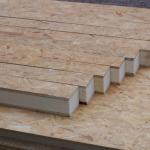How to measure voltage and current in an outlet with a multimeter
How to measure the voltage in the outlet or determine the value of the current flowing through it? This question has come up in front of almost every one of us. The answer to it is quite simple - it is a multimeter, a universal device for measuring a wide variety of electrical parameters.
The main feature of this device is the combination of a wide variety of devices that may be required by both professional and homegrown electricians. In order to use such a device, you do not need to have any specific knowledge. Suffice it to recall school physics lessons.
Before measuring the voltage in the outlet with a multimeter, let's figure out how this device works. And also we will deal with the quantities that he is able to measure.

Multimeters can be analog or digital. The answer to the question of which one is better is obvious - a digital device. After all, digital multimeters always indicate the exact value of the measured value, loyally perceive the wrong connection of probes, and are not so demanding on operating conditions. At the same time, there is only one argument in favor of analog devices - the price.

That is why in our article we will consider a digital multimeter. And let's start our review with multimeter probes. To connect them, a conventional device has two or three sockets.
So:
- The black probe must be connected to the "COM" jack., which is negative or ground. It depends on the measured value.

- The red probe is connected to one of the two remaining sockets.. The abbreviation "VΩmA" means that this socket is designed to measure voltage, resistance and current, but only at low values. To measure the current strength of 1A or more, you should use the 10ADC socket, which has a more powerful contact part.

Now let's talk about the quantities that a regular digital multimeter can measure. For different manufacturers, the designation of some quantities may differ, so we will give all possible options.
So:
- For DC voltage measurements, use the limit indicated by DCV. In this limit, there are usually several positions for voltage measurements from 200mV to 1kV. To measure AC voltage, use the limit labeled ACV. It usually also has several positions for measurements from 100V to 1000V.
- The DCA limit is intended for measuring currents. It also has several positions of several hundred microamps, up to several hundred milliamps. In addition, there is usually a provision for measuring currents up to 10A. But to connect the device to this position, the instruction advises to rearrange the red probe to the appropriate socket. This is necessary so that the current of 10A is large enough and the weak contacts of the “VΩmA” socket will simply burn out from it.
- To measure the resistance of a circuit, we have a limit "Ω". It has several positions for measuring values from 200Ω to 2MΩ.
Note! Any value can be measured using a larger limit. For example, a voltage of 100V can be measured at the 1000V position, not at the 200V position. But with an increase in the measurement limit, the error of the instrument also increases. In this regard, the obtained measurement results may not be sufficiently reliable.
In addition to these basic values, many devices have additional limits for measuring the current gain of a transistor, short circuit continuity, measuring diode parameters, and some others. These limits are already more narrowly focused and we will not consider them in more detail.

Measuring current and voltage with a multimeter
Knowing how to use a multimeter, you can consider the question of how they can measure depending on the measured values. After all, measuring current in an outlet is very different from measuring voltage. In addition, we will consider other possible options for measuring these quantities at home.
Measuring voltage with a multimeter
Let's start by considering the question of how to measure the voltage with a multimeter in an outlet? This procedure will help you answer the question whether the network parameters comply with the regulations and whether it is possible to connect a certain electrical installation to it.
- To do this, first of all, we install the probes in the appropriate sockets. In our case, this is the "COM" jack for the black probe and the "VΩmA" jack for the red probe.
- Now we make the necessary switching on the multimeter itself. Since the current in our outlet has a variable value, it is necessary to set the ACV limit.

- The switch position must be higher than the expected voltage. That is, for an outlet in which there should be 220V, you must choose the nearest higher value. If we take our multimeter, then we choose a value of 750V. For two or three-phase sockets, the nominal voltage value is 380V, that is, we also select the position at 750V.




